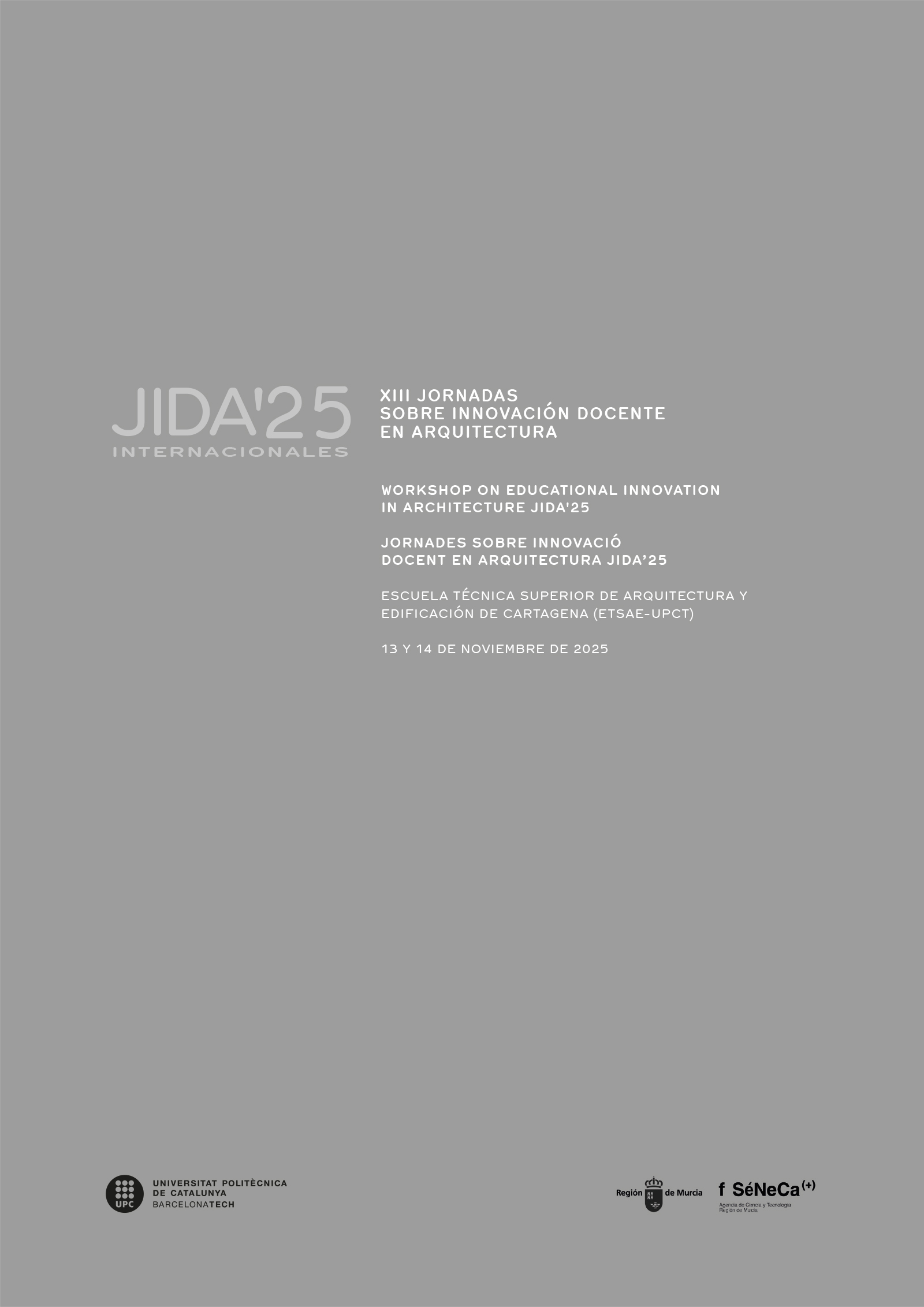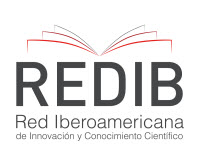Learning from the Masters: Research by Desing in Architectural Education for non-architects
DOI:
https://doi.org/10.5821/jida.2025.13665Keywords:
architectural design, masters of architecture, building engineeringAbstract
This paper presents a teaching experience in Architectural Design addressed to Building Engineerig students in Italy, who receive a reduced education in the field compared to architects, while sharing professional attributions. This context turns the course into a laboratory where Research by Design (RbD) operates as a learning accelerator, structured in three phases following Frayling’s classification (into, for, through design): theoretical framework, micro-exercises and integrative Project. Teaching, organized around universal categories –order, geometry, light, beauty and matter– is linked to the work and throught of the Masters of Architecture, from whom students learn critically and in practice. Results show that, even for non-initiated profiles in Design, RbD enables the generation of autonomous and reflective knowledge, building “cognitive scaffolds” that bring students closer to architectural culture and to the challenges once faced by their own Masters.
References
Baldo, G. 2019. Architettura e Ingegneria Edile: percorsi e prospettive. Milano: FrancoAngeli.
Capitel, A. 2009. La arquitectura compuesta por partes. Barcelona: Gustavo Gili.
Coderch de Sentmenat, J.A. 1961. No son genios lo que necesitamos ahora. En Domus (384, publicado noviembre 1961). Reproducido en Arquitectura, nº 38 (1962).
De la Sota, A. 2002. Alejandro de la Sota. Escritos, conversaciones, conferencias. Barcelona: Gustavo Gili.
Findeli, A. y Bousbaci, R. 2008. Research Through Design and Transdisciplinarity: A tentative contribution to the methodology of design research. Mount Gurten: Swiss Design Network.
Frayling, C. 1993. Research in Art and Design. RCA Research Papers, 1 (1).
Gehry, F. 1985. The Gehry House, Santa Monica. En Jodidio, P. (Ed.), Architecture Today. Colonia: Taschen.
Gregotti, V. 1966. Il territorio dell’architettura. Milán: Feltrinelli.
Kolb, D. 1984. Experiential Learning: Experience as the Source of Learning and Development. Englewood Cliffs: Prentice Hall.
Martí Arís, C. 1993. La cimbra y el arco. Ensayos sobre arquitectura y teoría. Barcelona: Edicions UPC.
Miralles, E. y Prats. E. 1991. Cómo acotar un croissant. En: El Croquis 49-50 (1991). Madrid: El Croquis, Publicación de Arquitectura, Construcción y Diseño.
Moneo, R. 1994. La vida de los edificios. En Inquietud teórica y estrategia proyectual en la obra de ocho arquitectos contemporáneos. Barcelona: Actar.
Moreno Mansilla, L. 2002. Apuntes de viaje al interior del tiempo. Madrid: Arquia.
Rossi, A. 1966. L’architettura della città. Padua: Marsilio.
Sánchez García, J.M. 2010. “El Proceso”. En: Campo Baeza, A. (2010). La estructura de la estructura. Buenos Aires: Nobuko.
Schön, D. 1983. The Reflective Practitioner: How Professionals Think in Action. New York: Basic Books.
Venezia, F. 1992. Lezioni di Architettura. Nápoles: Electa.
Wood, D., Bruner, J.S. y Ross, G. 1976. “The role of tutoring in problem solving”. Journal of Child Psychology and Psychiatry, 17(2).






















